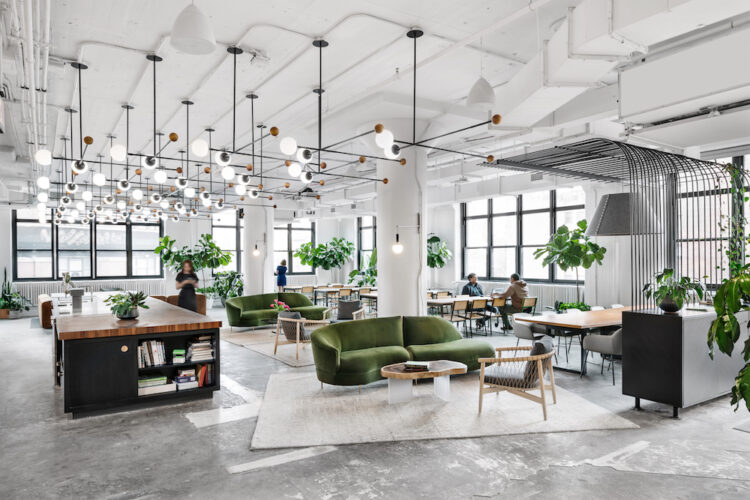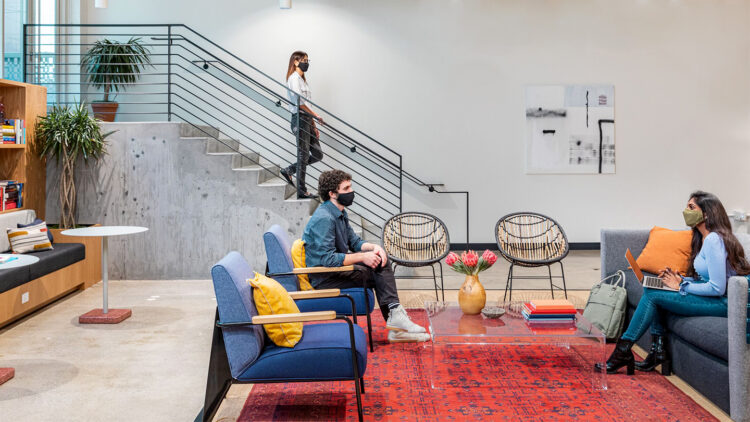One of the many things that the pandemic has taught the world is that many jobs do not need to be completed in an office setting. So, for many companies and services to remain in operation, many pivots were made to make those jobs possible from home. For many, this was a very successful transition in many ways.
All did not welcome the shift to working from home, and many workers have been yearning to get back into the office. However, others are pleased with the flexibility that working from home offers, making the idea of the hybrid office more enticing.
Page Contents
What Exactly Does Hybrid Work Mean?
A hybrid office would mean that workers could have the potential to work both at home and in the office. How hybrid offices could look will vary depending on where you work. The hybrid model is not new, but it was new to many in 2020. Many people have been working successfully from home with occasional in-office meetings for a long time.
Depending on the company, how much time is spent working in the office versus at home can also be debatable. For example, some companies might have opted to bring in staff for one day a week to allow everyone to socialize in person while getting work done.
Others might leave the choice to the employee unless they are needed in the office for something specific, while others might have more days in the office with a few at home.
The hybrid office might also be one that only has people coming into the office when a specific requirement or project needs to be completed in person. Otherwise, all other business activities will be completed at home.
How Will Companies Create Hybrid Workspaces?

Source: workdesign.com
There is a cost associated with converting an office space into a hybrid office. Some business owners might not be able to see past those immediate expenses toward the long-term savings that could be made. The other issue that companies will have to grapple with is how to ensure that work completed in the office can still be done safely.
While restrictions are being lifted in most places, the pandemic is not quite over yet. There may also be some employees who are still nervous about coming back into the office, so those factors will also have to be considered.
How the Office Could Evolve for Hybrid Work
Given the amount of real estate that could be freed up in an office with fewer people coming back to the workspace, there are opportunities for workplaces to create more free-flowing spaces that allow for a balance between work, socialization, and individual comfort.
The Benefits of a Hybrid Office
Given that socializing with coworkers is one of the main downsides cited by workers who had to shift to working at home, this could be an opportunity for those missing out on that interaction to meet that particular need. While meetings can happen online, conducting meetings on a screen is not for everyone.
There is also no denying the flexibility that working from home has offered many workers, especially those with families, long commutes, children, or specific health needs – see here for more information. However, the pandemic has magnified the inability of many employees to maintain a semblance of work/life balance, with more workplaces trying to work with their employees to try and establish that balance as a priority.
Workplaces also saw that catering to their workers’ needs, such as childcare or five-minute mental health breaks, has no bearing on how productive an employee can be. On the contrary, it has been proven time and time again that when employees feel supported, they will work harder.
Other benefits that many have found from working at home are the amount of money saved by not purchasing as much gas, not being tempted to buy lunch or on-the-go coffee, and even not purchasing new work clothes.
The Downsides of a Hybrid Office

Source: wework.com
Many employees asked about remote work have said they miss the face-to-face interactions they would have had in the office, whether sitting in a boardroom during a staff meeting or having a chat in the lunchroom for a couple of minutes while waiting for their turn at the coffee maker.
It has also been an unsavory adjustment for some to try and turn a space inside their home into a workspace. It can be challenging for those with smaller budgets or smaller spaces to find a healthy separation between work and home.
With all of these particular challenges associated with working at home, a hybrid office might still be nerve-wracking for some who are itching to get back to the way things were.
The New Reliance on Technology
Technology has been both a blessing and a curse in how people have been working through the pandemic. It has highlighted the importance of modern technology being more accessible for families and allows many to learn technological skills they did not previously have.
That being said, Zoom fatigue is accurate, and it has been a hard adjustment for new remote workers to have to be connected more than ever before. In addition, remaining somewhat stationary while operating a device or computer can strain many people’s physical and mental health.
How Hybrid Offices Are Changing Other Industries
Tech gadgets have also taken inventory of how famous hybrid and remote work have become since the pandemic, creating new products specifically. For example, many gadgets, such as smartphone applications, online services, and tablets, have made conducting work from home much easier.
Improvements have been made to video conference capabilities, and new services to organize work on the computer have arrived. Similarly, with many creating home office spaces, the popularity of sit/stand desks, desks that can be used on couches or beds, and even storage solutions for small workspaces have all risen.
Will Hybrid Working Models Last?

Source: raconteur.net
It is hard to know whether or not the new hybrid model will last once the pandemic is over and the need to stay distanced no longer exists. Despite the numerous benefits for workplaces and employees alike, there is still the possibility that hybrid work is a trend.
Some businesses might find that the permanent change is too much of a change to make. Hybrid models haven’t worked for all businesses, and the shift back to in-office work cannot come soon enough. However, it’s much more likely to lead to permanent change for the businesses that hybrid work has been successful for this far into the pandemic.
Final Thoughts
The workplace, in general, has changed so drastically over the last couple of years. While not by choice, it has forced a lot of workplaces to reconsider how work can be done most efficiently without sacrificing the needs of their team.
It’s doubtful that most workplaces will return to the way things were before the pandemic, and the hybrid office will become the new normal.





